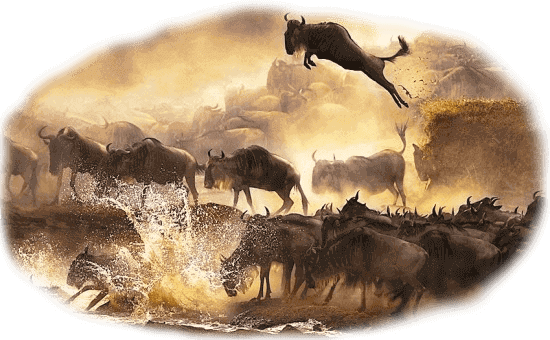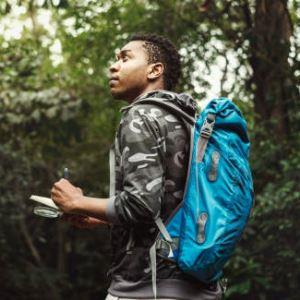 Kenya is an enchanting destination not only for its iconic wildlife but also for its rich and diverse cultural tapestry. For German tourists looking to experience something more profound than a traditional safari, Kenya offers an array of cultural encounters that bring history, heritage, and hospitality to the forefront. Whether you’re wandering through the rhythm-filled alleys of Nairobi or sharing a meal with a pastoral community in the Rift Valley, the country promises authentic connections that linger long after your return home. Begin your journey in the heart of Kenya’s capital at the Bomas of Kenya, where traditional dance, music, and craftsmanship are showcased in colorful daily performances. It’s a perfect introduction to the more than 40 ethnic communities that call Kenya home. Each dance tells a story, echoing generations of beliefs and practices. From there, head to the countryside where you can immerse yourself in the culture of the Maasai people. In villages near the Maasai Mara and Amboseli, German visitors can engage with local communities by participating in traditional ceremonies, learning age-old customs, and experiencing life as it has been lived for centuries. These visits often include opportunities to stay overnight, offering a rare and respectful glimpse into Maasai life. Traveling further east, the Kenyan coast reveals an entirely different cultural landscape. In places like Mombasa and Lamu, German tourists can walk through narrow streets lined with coral stone houses, explore intricately carved doors, and learn about the fusion of African, Arab, and Asian influences that define Swahili culture. Lamu Old Town, a UNESCO World Heritage Site, is particularly captivating with its preserved architecture and relaxed, timeless atmosphere. For those interested in historical depth, the Mau Mau caves in Central Kenya and the museums in Kisumu and Nairobi offer rich narratives of resistance, liberation, and national identity. The sacred Kit Mikayi rock formation near Lake Victoria, revered by the Luo people, and visits to indigenous Meru and Embu communities further deepen the cultural experience. Kenya cultural holidays tailored for German visitors ensure a balance of guided exploration and authentic immersion. Whether through music, storytelling, artisanal crafts, or culinary discoveries, Kenya’s traditions open doors to meaningful cross-cultural connections that are both educational and inspiring. Kenya invites German tourists not just to observe, but to participate to share in the spirit of a nation that thrives on community, storytelling, and the enduring rhythm of its cultural heartbeat. This invitation extends beyond tours and excursions, encouraging genuine interactions with local communities and traditions. German travelers are welcomed into homes, guided through sacred sites, and often find themselves dancing to the beat of tribal drums under starlit skies. Whether engaging in a communal meal, attending a wedding ceremony, or learning traditional crafts from local artisans, the opportunities to connect are both rich and varied. These experiences not only deepen cultural understanding but also foster mutual respect and lasting friendships. Through these immersive moments, German visitors become part of Kenya’s living heritage, taking home more than souvenirs they carry with them stories, emotions, and a sense of belonging that only true cultural exchange can provide.
Kenya is an enchanting destination not only for its iconic wildlife but also for its rich and diverse cultural tapestry. For German tourists looking to experience something more profound than a traditional safari, Kenya offers an array of cultural encounters that bring history, heritage, and hospitality to the forefront. Whether you’re wandering through the rhythm-filled alleys of Nairobi or sharing a meal with a pastoral community in the Rift Valley, the country promises authentic connections that linger long after your return home. Begin your journey in the heart of Kenya’s capital at the Bomas of Kenya, where traditional dance, music, and craftsmanship are showcased in colorful daily performances. It’s a perfect introduction to the more than 40 ethnic communities that call Kenya home. Each dance tells a story, echoing generations of beliefs and practices. From there, head to the countryside where you can immerse yourself in the culture of the Maasai people. In villages near the Maasai Mara and Amboseli, German visitors can engage with local communities by participating in traditional ceremonies, learning age-old customs, and experiencing life as it has been lived for centuries. These visits often include opportunities to stay overnight, offering a rare and respectful glimpse into Maasai life. Traveling further east, the Kenyan coast reveals an entirely different cultural landscape. In places like Mombasa and Lamu, German tourists can walk through narrow streets lined with coral stone houses, explore intricately carved doors, and learn about the fusion of African, Arab, and Asian influences that define Swahili culture. Lamu Old Town, a UNESCO World Heritage Site, is particularly captivating with its preserved architecture and relaxed, timeless atmosphere. For those interested in historical depth, the Mau Mau caves in Central Kenya and the museums in Kisumu and Nairobi offer rich narratives of resistance, liberation, and national identity. The sacred Kit Mikayi rock formation near Lake Victoria, revered by the Luo people, and visits to indigenous Meru and Embu communities further deepen the cultural experience. Kenya cultural holidays tailored for German visitors ensure a balance of guided exploration and authentic immersion. Whether through music, storytelling, artisanal crafts, or culinary discoveries, Kenya’s traditions open doors to meaningful cross-cultural connections that are both educational and inspiring. Kenya invites German tourists not just to observe, but to participate to share in the spirit of a nation that thrives on community, storytelling, and the enduring rhythm of its cultural heartbeat. This invitation extends beyond tours and excursions, encouraging genuine interactions with local communities and traditions. German travelers are welcomed into homes, guided through sacred sites, and often find themselves dancing to the beat of tribal drums under starlit skies. Whether engaging in a communal meal, attending a wedding ceremony, or learning traditional crafts from local artisans, the opportunities to connect are both rich and varied. These experiences not only deepen cultural understanding but also foster mutual respect and lasting friendships. Through these immersive moments, German visitors become part of Kenya’s living heritage, taking home more than souvenirs they carry with them stories, emotions, and a sense of belonging that only true cultural exchange can provide.
Key Kenyan Cultural Experiences for German Travelers
| Cultural Experience | Region | Highlight for German Tourists |
|---|---|---|
| Bomas of Kenya | Nairobi | Traditional dances, music, and craft displays |
| Maasai Village Visit | Maasai Mara/Amboseli | Warrior culture, ceremonies, and overnight stays |
| Lamu Old Town | Coastal Kenya | Swahili heritage, architecture, and dhow sailing |
| Kit Mikayi & Kisumu Museum | Western Kenya | Spiritual site and ethnographic exhibits |
| Mau Mau Caves | Central Kenya | Independence history and local storytelling |
| National Museums of Kenya | Various Locations | Comprehensive exhibits on Kenyan culture and history |
A Taste of Kenya: Unforgettable Cultural Experiences for Germans
Kenya offers a spectacular range of cultural experiences that deeply resonate with German travelers seeking more than the traditional safari. Whether you're walking through Nairobi's vibrant craft markets or enjoying a home-cooked meal in a remote village, Kenya’s cultural richness leaves a lasting impression. For those interested in community, heritage, and human connection, Kenya is a deeply rewarding destination. At the Bomas of Kenya in Nairobi, traditional dances and music from over 40 ethnic groups showcase the country's cultural variety. These performances are more than entertainment; they are storytelling rituals that preserve historical narratives. Visitors also explore traditional homesteads, giving them a tangible feel of life in different communities. German tourists are drawn to rural settings like the Maasai villages near Amboseli and Maasai Mara. These visits allow guests to witness authentic daily life herding cattle, preparing food, and engaging in rites of passage. Often, guests are invited to spend the night in traditional manyattas, gaining firsthand insight into a culture that prizes community, resilience, and tradition. In the Great Rift Valley and western regions, immersive experiences include music workshops with the Luo people, where traditional instruments and rhythms are passed down generations. German travelers often participate in drumming circles or dance ceremonies, forging genuine connections beyond language. The Kenyan coast offers a different experience, steeped in Swahili culture. In cities like Lamu and Mombasa, German tourists can walk narrow alleyways filled with the scent of spices, admire coral stone architecture, and learn about the Islamic influence that has shaped the region for centuries. A visit to Lamu Old Town, a UNESCO World Heritage Site, offers an unmatched dive into centuries-old maritime traditions. Cultural excursions often include stops at local museums, such as the Nairobi National Museum or the Kisumu Museum, where artifacts, exhibitions, and cultural demonstrations tell Kenya’s story from ancient times to independence. For more adventurous tourists, hikes to spiritual landmarks like Kit Mikayi rock give a sacred perspective on local beliefs. These experiences are all part of the best cultural tours in Kenya for German tourists, offering rich, respectful engagement that goes far beyond sightseeing. Whether learning to cook a Kenyan dish, crafting traditional beadwork, or listening to fireside tales from village elders, these moments build cross-cultural appreciation and enduring memories. In every corner of Kenya, there are opportunities for German visitors to go beyond the surface, to explore not just the land but the heart of its people. From the bustling cities to the serene countryside and coastal villages, the essence of Kenya is best understood through its people. Engaging with local communities allows German tourists to witness age-old traditions, hear stories passed down through generations, and participate in daily activities that reflect the country's deep-rooted heritage. Whether it’s learning how to bead from Maasai artisans, cooking with Swahili hosts, or listening to traditional music performed in a village setting, these interactions create lasting impressions. The warmth of Kenyan hospitality ensures that every exchange feels personal and meaningful. In doing so, German travelers don’t just gain insight into a different culture they build bridges of empathy and understanding, enriching their journey with moments of genuine human connection.
Guided Cultural Tours in Kenya for German Travelers
For German travelers seeking to explore the vibrant and multifaceted culture of Kenya, guided cultural tours offer an enriching experience that goes far beyond conventional sightseeing. These tours often begin in Nairobi, where visitors are introduced to Kenya’s heritage through curated visits to places like the Bomas of Kenya or the Nairobi National Museum. Each stop offers insight into Kenya’s 40-plus ethnic communities, their history, values, and customs. As part of many itineraries, tourists venture into traditional villages in regions such as the Great Rift Valley, Maasai Mara, or the Central Highlands. There, they may take part in community-led workshops, watch traditional dances, and learn from artisans skilled in beading, carving, and storytelling. These interactions are not staged performances but real, respectful exchanges aimed at cultural preservation and mutual learning. One of the most exciting ways to engage with Kenya’s heritage is to attend Kenyan cultural festivals as a visitor from Germany. Events such as the Lake Turkana Festival, Lamu Cultural Festival, and Maralal Camel Derby allow tourists to witness traditional music, dances, cuisine, and crafts in their natural celebratory context. These festivals provide a deeper understanding of the ethnic diversity and artistic expression within Kenya. Guided cultural tours are tailored to allow flexibility and authenticity. German tourists often appreciate the opportunity to engage directly with locals, participate in day-to-day tasks like farming or cooking, or even join conservation efforts tied to indigenous knowledge systems. These immersive tours foster respect, empathy, and cultural awareness, making each journey not just educational but also transformative. In essence, guided cultural tours in Kenya help German visitors form lasting impressions and personal connections. They open up opportunities to learn through doing, seeing, and feeling creating an unforgettable exploration of Kenya's rich and living cultural heritage. These experiences are not only educational but also emotional, as they foster genuine relationships and appreciation for Kenya's diversity. From shared meals and local storytelling to observing age-old rituals, German travelers come away with more than just photos; they carry with them personal insights and memories. The immersive nature of these tours ensures that each interaction deepens understanding and mutual respect.
From Maasai Traditions to Coastal Heritage: Kenya for German Tourists
Kenya's cultural diversity is one of its most captivating features, offering German tourists an opportunity to engage meaningfully with a range of traditions and ways of life. One of the most iconic and immersive experiences for visitors is exploring the culture of the Maasai people. Renowned for their distinct red clothing, beadwork, and semi-nomadic lifestyle, the Maasai are a proud community that has maintained its customs despite modernization. Many travelers choose to visit Maasai villages in Kenya as a German tourist to witness this resilience firsthand. Such visits offer a rare glimpse into age-old traditions, including cattle herding, fire-making techniques, and the vibrant dances performed to mark rites of passage. Staying overnight in a traditional manyatta (Maasai homestead) provides an even deeper cultural exchange. Visitors share stories around a campfire, taste traditional foods like nyama choma (grilled meat), and learn about Maasai beliefs tied to nature and the land. This close interaction fosters genuine connections that go far beyond tourism, offering mutual learning and respect. In contrast to the arid savannahs of the Maasai, the coastal region of Kenya introduces German tourists to the Swahili culture, heavily influenced by centuries of trade with Arabs, Persians, and Indians. Cities like Mombasa and the island of Lamu reveal a unique architectural style characterized by ornate doors, coral stone houses, and ancient mosques. The narrow streets of Lamu Old Town transport visitors back in time, making it easy to imagine the bustling trade that once defined the East African coast. Food, language, and religion form the cornerstone of Swahili identity. German tourists can enjoy Swahili dishes rich in spices, take part in dhow sailing excursions, and visit sites like Fort Jesus or the Riyadha Mosque. These experiences offer a deeper appreciation of the cultural synthesis that defines the coast. Whether in the highland savannahs or along the Indian Ocean, Kenya’s cultural heritage presents countless opportunities for German travelers to connect with local communities. The vibrant rhythm of local life, steeped in tradition, invites visitors to explore customs that have been passed down for generations. Through respectful engagement, visitors gain a more authentic understanding of Kenyan life and come to appreciate the nuances of its many cultural identities. German tourists often find themselves drawn into meaningful conversations, spontaneous dance performances, and participatory craft-making sessions that bring these traditions to life. These meaningful interactions be it with Maasai elders in the Rift Valley or Swahili artisans in Lamu create powerful memories and a deeper sense of global citizenship. They go beyond typical tourist experiences by offering insight into local values, history, and spiritual beliefs. By engaging with everyday life in Kenya, German travelers not only witness culture but also become part of it, forming emotional connections that linger long after the journey ends.
Discovering Maasai and Swahili Traditions in Kenya
When German tourists explore Kenya’s rich culture, they’re introduced to two of the country’s most distinct cultural legacies: the pastoral traditions of the Maasai and the coastal Swahili heritage. The Maasai, with their vibrant red shukas and intricate beadwork, represent a resilient and proud community. Visiting Maasai homesteads provides tourists an immersive experience from traditional dances and storytelling around the fire to learning about livestock as a central pillar of their identity. The sense of continuity with the past is both moving and enlightening. Meanwhile, on Kenya’s coast, the Swahili culture paints a completely different but equally captivating picture. Rooted in centuries of Afro-Arab trade, Swahili life is evident in everything from language and architecture to religion and cuisine. Visitors wandering the alleys of Lamu or the old town of Mombasa can see coral stone houses with elaborately carved doors, hear the call to prayer from historic mosques, and enjoy local dishes rich in coconut, spices, and seafood. One of the most memorable aspects of this cultural journey is the food. There are countless traditional Kenyan food experiences for German tourists, whether savoring goat meat cooked over an open fire in the Rift Valley or enjoying coastal delicacies such as pilau and samaki wa kupaka. These meals are more than sustenance they are expressions of culture, hospitality, and identity. The Maasai and Swahili traditions offer German travelers a deep, nuanced, and flavorful understanding of Kenya's vibrant cultural landscape. While the Maasai present a raw connection to ancestral practices and the wilderness, the Swahili reflect centuries of maritime trade, blending African, Arab, and Asian influences. These contrasting yet complementary cultural threads make Kenya a fascinating destination for those eager to experience human diversity in its most expressive forms. German visitors often find themselves captivated by the colors, rhythms, and rituals of Maasai life, where oral traditions, communal celebrations, and harmonious living with nature define the cultural ethos. On the other hand, coastal Kenya presents a sensory feast from the muezzin's call echoing through stone alleys to the spiced aroma of Swahili cuisine. By engaging with both of these cultural legacies, German tourists gain not only an appreciation for Kenya’s heritage but also form connections that foster cross-cultural empathy, understanding, and a deeper sense of shared humanity.
Kenyan Traditions & Heritage: A German Visitor’s Must-See List
 Kenya’s diverse cultural heritage extends beyond its wildlife and landscapes, offering German travelers a deeply enriching exploration of its living history. Whether rooted in ancient spiritual beliefs or modern-day resistance movements, Kenya’s heritage sites reveal the soul of the nation. For German tourists seeking a deeper connection to the past, these locations are must-visits. One such place is Kit Mikayi, a striking rock formation near Kisumu in western Kenya, revered by the Luo community for its spiritual significance. Visiting Kit Mikayi allows travelers to engage with local lore and appreciate the symbolic role of nature in traditional belief systems. A short drive away, the Kisumu Museum adds context with its exhibits on Luo customs, housing replicas of traditional homesteads and everyday tools. Further inland, the Mau Mau caves in Nyeri offer a powerful narrative of Kenya’s fight for independence. These caves, used by freedom fighters during colonial resistance, provide a tangible connection to the country’s modern identity. Visiting these sites introduces German tourists to Kenya’s lesser-known but deeply impactful historical chapters. In central and eastern regions, travelers can explore the heritage of the Gikuyu, Meru, and Embu communities. Cultural centers, village homestays, and craft workshops open up windows into age-old agricultural practices, indigenous healing, and music traditions. In these quieter, less-traveled areas, the rhythm of daily life reveals a side of Kenya that is deeply authentic and profoundly moving. A highlight for many German visitors is a stop at the National Museums of Kenya, which operate across major cities like Nairobi, Mombasa, Kisumu, and Eldoret. These institutions offer curated narratives of Kenya’s diverse ethnic groups, colonial legacy, and prehistoric roots, with exhibits ranging from tribal regalia and early tools to archaeological finds from the Great Rift Valley. All of these places make up the rich mosaic of Kenya heritage sites for German cultural travelers. Each site, from spiritual rock formations and resistance-era caves to centuries-old museums and indigenous villages, offers a narrative thread in the broader story of Kenya’s national identity. By exploring them, tourists gain not only a sense of place but also a connection to the people whose lives continue to shape Kenya’s evolving identity. These moments provide context and emotion to what might otherwise be seen only as historical landmarks. These experiences provide not just education, but empathy bridging cultures and generations with every step taken across Kenyan soil. German visitors often leave with more than just photographs; they carry with them a heightened awareness of cultural resilience, a deeper appreciation for human diversity, and a desire to share these stories back home. In doing so, cultural travel becomes a two-way exchange of understanding and respect.
Kenya’s diverse cultural heritage extends beyond its wildlife and landscapes, offering German travelers a deeply enriching exploration of its living history. Whether rooted in ancient spiritual beliefs or modern-day resistance movements, Kenya’s heritage sites reveal the soul of the nation. For German tourists seeking a deeper connection to the past, these locations are must-visits. One such place is Kit Mikayi, a striking rock formation near Kisumu in western Kenya, revered by the Luo community for its spiritual significance. Visiting Kit Mikayi allows travelers to engage with local lore and appreciate the symbolic role of nature in traditional belief systems. A short drive away, the Kisumu Museum adds context with its exhibits on Luo customs, housing replicas of traditional homesteads and everyday tools. Further inland, the Mau Mau caves in Nyeri offer a powerful narrative of Kenya’s fight for independence. These caves, used by freedom fighters during colonial resistance, provide a tangible connection to the country’s modern identity. Visiting these sites introduces German tourists to Kenya’s lesser-known but deeply impactful historical chapters. In central and eastern regions, travelers can explore the heritage of the Gikuyu, Meru, and Embu communities. Cultural centers, village homestays, and craft workshops open up windows into age-old agricultural practices, indigenous healing, and music traditions. In these quieter, less-traveled areas, the rhythm of daily life reveals a side of Kenya that is deeply authentic and profoundly moving. A highlight for many German visitors is a stop at the National Museums of Kenya, which operate across major cities like Nairobi, Mombasa, Kisumu, and Eldoret. These institutions offer curated narratives of Kenya’s diverse ethnic groups, colonial legacy, and prehistoric roots, with exhibits ranging from tribal regalia and early tools to archaeological finds from the Great Rift Valley. All of these places make up the rich mosaic of Kenya heritage sites for German cultural travelers. Each site, from spiritual rock formations and resistance-era caves to centuries-old museums and indigenous villages, offers a narrative thread in the broader story of Kenya’s national identity. By exploring them, tourists gain not only a sense of place but also a connection to the people whose lives continue to shape Kenya’s evolving identity. These moments provide context and emotion to what might otherwise be seen only as historical landmarks. These experiences provide not just education, but empathy bridging cultures and generations with every step taken across Kenyan soil. German visitors often leave with more than just photographs; they carry with them a heightened awareness of cultural resilience, a deeper appreciation for human diversity, and a desire to share these stories back home. In doing so, cultural travel becomes a two-way exchange of understanding and respect.
Must-Visit Cultural Destinations in Kenya for Germans
Kenya is home to a vibrant mix of ethnic traditions, historical landmarks, and living cultures that offer enriching experiences for culturally curious travelers. For German tourists seeking authentic interactions and educational journeys, the country's cultural destinations provide deep insights into Kenya's identity. Here are six must-visit cultural highlights every German traveler should explore:
- Bomas of Kenya (Nairobi): This cultural center is a gateway to understanding Kenya's 40+ ethnic groups. With daily performances of traditional dances, music, and storytelling, it offers a lively and informative introduction to the country’s diverse communities.
- Maasai Village Visit (Maasai Mara/Amboseli): One of the most iconic experiences, visiting a Maasai village allows German tourists to witness warrior ceremonies, traditional beadwork, and pastoral life. Overnight stays in manyattas foster deep, respectful cultural exchange.
- Lamu Old Town (Coastal Kenya): A UNESCO World Heritage Site, Lamu is steeped in Swahili culture. Visitors can explore ancient architecture, bustling markets, and serene dhow rides, all reflecting centuries of Afro-Arab influence.
- Kit Mikayi & Kisumu Museum (Western Kenya): Kit Mikayi is a spiritual rock formation sacred to the Luo people. Nearby, Kisumu Museum offers cultural exhibits and traditional homestead replicas that contextualize the region’s customs.
- Mau Mau Caves (Central Kenya): These caves in Nyeri provide a powerful glimpse into Kenya’s independence struggle. Guided tours explain the significance of this resistance site and the legacy of the Mau Mau movement.
- National Museums of Kenya (Various Locations): With branches in major cities, these museums showcase Kenya’s prehistoric discoveries, colonial past, and ethnic artifacts, offering a comprehensive cultural education.
Each of these destinations enriches the visitor’s understanding of Kenya’s heritage, making for a journey filled with insight, connection, and unforgettable memories.






